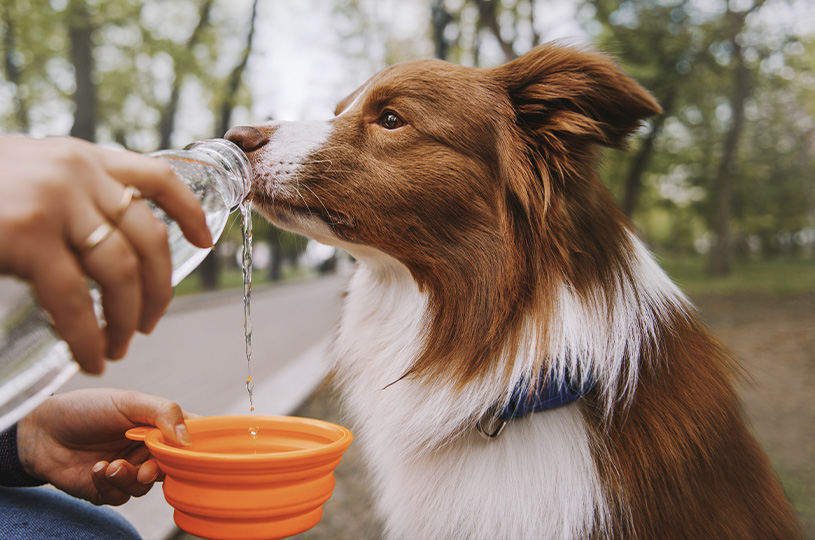
The summer season brings many glorious sunny days, but it also can bring scorching temperatures that can have adverse effects on our furry friends. As responsible pet owners, it is important to understand the impact that summer heat can have on dogs and take necessary precautions to keep them safe and comfortable.
What Temperatures are Too Hot for Dogs?
Unlike people, dogs have a very limited ability to sweat, which in turn makes them rather inefficient in cooling their body temperature. In fact, your dog’s main cooling mechanism is by panting, which is why being confined in a small, closed space with high temperatures (like a closed and locked car on a summer day) can quickly lead to overheating and heat stroke. The temperature threshold at which it becomes unsafe for dogs to be outside varies based on factors such as breed, size, age, and overall health. However, as a general guideline, it is advisable to keep dogs indoors or provide shade and water whenever the temperature exceeds 85°F. Above 90°F (32°C), the risk of heatstroke significantly increases.
Prevention Methods to Keep Dogs Safe
There are a number of ways to safeguard your pet against the summer heat and help keep them safe and cool.
- Provide Ample Shade: Ensure your dog has access to shaded areas, such as under trees or umbrellas, when outdoors. Consider creating a covered spot with a canopy or awning.
- Fresh Water Supply: Always keep a bowl of fresh, cool water available for your dog. Check it regularly to ensure that it remains clean and replenished.
- Limit Outdoor Exercise: Restrict physical activities during peak heat hours, typically between 10 a.m. and 4 p.m. Instead, schedule walks or playtime in the early morning or late evening when the temperature is cooler.
- Protective Paw Care: Hot pavement or sand can burn your dog’s paws. Walk your dog on grassy areas whenever possible and avoid streets and sidewalks, or use protective booties to shield their paws from hot surfaces.
- Avoid Hot Cars: Never leave your dog unattended in a parked car, even for a few minutes. The temperature inside a car can rise to dangerous levels rapidly, leading to heat stroke or death.
Beating the Heat- Protecting Your Canine Companion in Summer
Signs of Overheating
When temperatures rise be vigilant and do your best to recognize signs of heat stress or overheating in dogs as soon as they occur. Common indicators include excessive panting and drooling, rapid or irregular heartbeat, lethargy or weakness, glazed eyes, and dizziness, vomiting or diarrhea, dark or bright red gums and tongue, and/or collapse or seizures.
Steps to Take If Your Dog is Overheating
- Move to a Cooler Area: Bring your dog indoors or seek shade immediately.
- Offer Water: Allow your dog to drink small amounts of cool water. Do not force them to drink.
- Cool Down: Wet your dog’s body with cool (not cold) water. You can use damp towels or spray water gently on them. Apply cold packs to their head, neck, and chest.
- Fan Air: Use a fan or air conditioning to facilitate air circulation and help lower their body temperature.
- Contact your Veterinarian: Even if your dog appears to recover, it is crucial to seek veterinary attention. Internal damage may not be apparent, and professional evaluation is necessary to avoid the possibility of long-term effects to your pet’s health.
As summer temperatures soar, it is our responsibility to protect our four-legged companions from the perils of excessive heat. By understanding the risks, implementing preventive measures, and recognizing the signs of overheating, we can ensure the safety and well-being of our beloved dogs. Remember, a little extra care goes a long way in keeping them cool, comfortable, and healthy during the hot summer months.